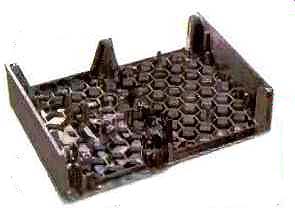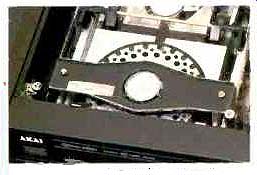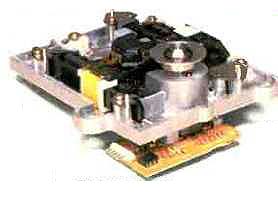The road to perfection has no shortcuts.

Most CD marketing has turned into a numbers and gimmicks race, with many manufacturers suggesting that one single feature leads to superior sound. Instead of looking for shortcuts, the Akai engineers have focused on everything connected with reading and processing the digital signal accurately.
The result? The CD-93-B Reference Master CD Player. The moment a CD is inserted, disc rotation is stabilized by an oversized, die-cast disc damper.

---Its die-cast anti-resonant disc tray further reduces unwanted vibrations,
as do the player's entire aluminum honeycomb monocoque chassis and high-frequency
absorbing ceramic pedestals.
The CD-93-B's die-cast 3-beam laser pick-up with "A' servo system further ensures that the disc is read with unsurpassed accuracy. By effectively minimizing playback errors, Akai engineers have reduced the distortion generated by error concealment.

---Akai’s disc clamper: because more stable rotation means
fewer playback errors.
The CD-93-B's excellence in design naturally extends to its circuitry, which features completely separate and shielded digital and analog sections. Independent and isolated power transformers prevent digital noise from interfering with the analog signal. Six 35 years of building tape transports, stages of internal fiber optic coupling as well as optical outputs ensure that no signal degradation occurs. For optimum decoding of the digital signal, the CD-93-B uses an 18-bit digital filter, dual glitchless D/A converters and a highly linear 3rd order Butterworth GIC analog filter.

---- This laser transport reflects Akai's 35 years of building tape transports.
Akai's extra attention to engineering, design and construction quality is proven out by Stereo Review's recent lab tests? The CD-93-B had one of the flattest frequency responses and the best low-level linearity they ever measured.
Let the other manufacturers search for the one thing that will make their players sound better. At Akai, that one thing is everything.
(Source: Audio magazine, Dec., 1988)
Also see: Onkyo Acculinear 18-bit CD player (Nov. 1988)
= = = =